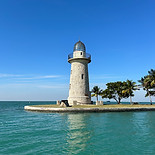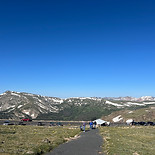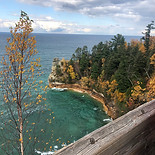
Revisiting America's Largest Classroom
Between 2010 and 2012, a collaborative survey across 16 national park sites and wildlife refuges explored how visitors perceive and understand climate change. Led by Colorado State University and the National Park Conservation Association (NPCA). The study provided foundational insights that have shaped climate communication and education efforts across public lands. Today, over a decade later, we are updating this research to assess how visitor attitudes have changed and how climate change is affecting park experiences.
As climate impacts become more visible, parks are uniquely positioned
to foster climate literacy—connecting visitors to science, relevance, and informed action. This renewed survey initiative aligns with the NPS Climate Change Response Strategy and the National Climate Change Interpretation and Education Strategy, which emphasize collaborative stewardship and communication.
The results of the updated survey will help us understand how visitors perceive climate change today, and how it shapes their park experiences. Ultimately, this research will help ensure our public lands remain not only protected landscapes, but also essential platforms for public education and engagement.
Our Research Journey
From January to July 2025, researchers from Northern Michigan University surveyed visitors at 13 national parks and wildlife refuges across diverse U.S. regions to better understand public perceptions of climate change. Our partners at Slippery Rock University also collected data at various parks and refuges across the country.
This effort was conducted in collaboration with the National Park Service and U.S. Fish and Wildlife Service. It builds on the original 2012 study and aims to capture a similarly robust sample. Survey sites span from Florida to California, the Rocky Mountains to the Midwest, including iconic locations such as the Everglades, Yosemite, Grand Teton, and Pictured Rocks National Lakeshore.
Site Reports
The reports featured on the site summarize visitor attitudes, concerns, and support for climate adaptation strategies, based on survey data collected from diverse geographic regions. Each site-specific report includes key themes, visualized data, and insights for interpreters, educators, and stakeholders.
Biscayne National Park
Lake Mead National Recreation Area
Everglades National Park
Yosemite National Park
Joshua Tree National Park
Golden Gate National Recreation Area













